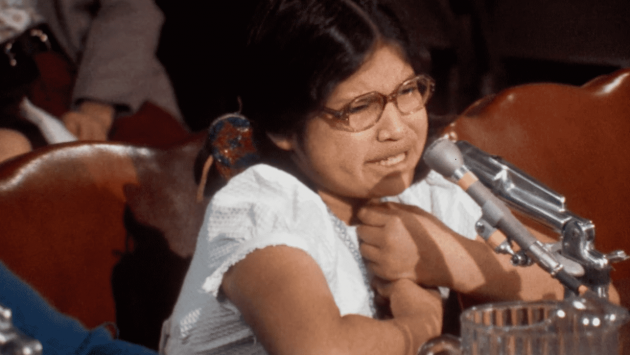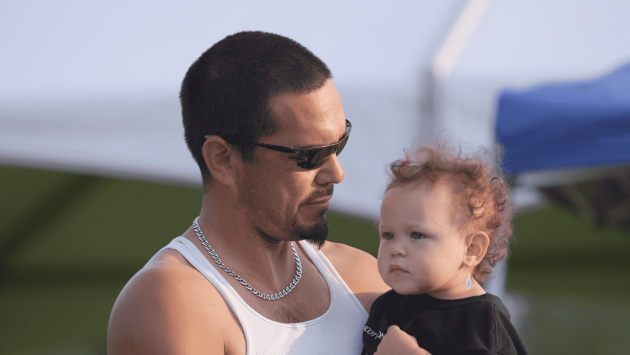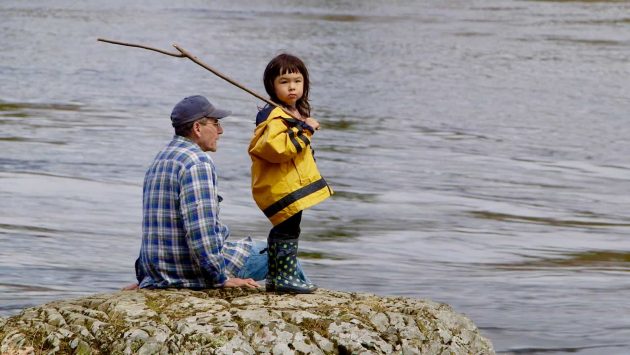The documentary follows the commission’s formation and internal conflict
According to some First Nations legends, hope and justice begin in the east – where dawn’s light first reaches Turtle Island.
This is one underlying theme of the award-winning documentary Dawnland, which recently screened at Montreal’s Concordia University as part of the Cinema Politica series. The film follows the Maine-Wabanaki State Child Welfare Truth and Reconciliation Commission (MWTRC), the first of its kind in the United States.
Over two years from 2013 to 2015, five Indigenous and non-Indigenous commissioners travelled across the state collecting testimony from the Wabanaki people about the devastating impact of longstanding government policies that forced their children into foster care or adoptive homes with white families. The MWTRC issued its report in June 2015.
While the five MWTRC commissioners originally focussed on contemporary failures of Maine’s child-welfare system, they quickly realized that its institutional racism could be traced back centuries. The film includes archival footage of infamous boarding schools intended to “kill the Indian, save the man” and interviews with survivors of the state’s equivalent to Canada’s residential-school system.
“It is especially heartbreaking and powerful to see so many of the Elders who came forward for the first time,” Dawnland impact producer Tracy Rector told the Nation. “Oftentimes it was the very first time they shared that aspect of their lives. The courage of those individuals stuck with me the most.”
Among the testimonials is one woman’s anguished memory of bathing in bleach because she so badly wanted to whiten her skin. Others recalled years of physical and emotional abuse or childhoods spent alternating through dozens of uncaring foster homes and hospitals.
The documentary follows the commission’s formation and internal conflict, interviews with Wabanaki people and former caseworkers, and attempts to nurture trust and healing. In one ceremony, the group sets fire to their collective tear-stained tissues in the hopes that the smoke will reach their ancestors.
While Dawnland co-directors Adam Mazo and Ben Pender-Cudlip are both white, they successfully built trust in the communities by being honest about their identities and intentions. They also built a creative team of primarily Indigenous collaborators.
“They were very purposeful in bringing me on as an Indigenous filmmaker but also in making sure the community was very involved and that they felt ownership and power in how the story was told,” Rector explained. “I think we’re in a time where people want to understand how to be better allies. People are yearning for truth in history.”
White privilege is a subtext unfolding throughout the film. During one scene, the interviewing group’s predominantly white members are sequestered in the basement to make some of the Wabanaki feel more comfortable sharing their stories. After some complained about being excluded, the Indigenous members of the commission took the time to thoughtfully explain why it was necessary.
While community members are initially reluctant to participate in the commission, healing circles begin organically occurring with many expressing relief in finally breaking their silence.
Denise Altvater’s work helping to train state workers on child-welfare compliance eventually led to the MWTRC’s formation, which she hoped would contribute to understanding and undoing Maine’s racist history. When she was seven years old, Altvater was placed with a foster family that she said starved and sexually assaulted her. Her work helping create the commission was part of her own healing process. As she says, “Every time I tell my story it has less power over me.”
“People sometimes didn’t know they had a story, then they started telling it and they would break down,” recalled one of the commissioners, Maine Secretary of State Matthew Dunlap. “We were there to bear witness to their story and kind of tell them gently what happened to you should not have happened.”
With Maine having longer borders with Canada than other states, Dunlap told the Nation that the commission spent considerable time observing TRCs here and around the world. He said that Maine’s commission was the first to be chartered under the agreement of all affected parties.
Dunlap rejected the governor’s pressure to resign from the commission over fears of potential reparation costs that the state may have faced, responding that anyone can make the case for reparations regardless of the report. He was surprised there wasn’t more of a backlash against the report’s findings of cultural genocide.
“Among the post-colonial folks there were a lot of arguments,” Dunlap recalled. But he told them, “‘You’re thinking of Auschwitz.’ You take a culture, remove the children from that culture, you forbid them from speaking their language, you forbid them from practicing their religious beliefs, and you try to absorb them into another culture – what do you call that?”
He observed the Wabanaki’s relief that the report finally acknowledged this enduring injustice. In the film, someone quips, “Now we have documentation, which white people love.”
Dunlap and the other TRC commissioners are amazed that the documentary has taken their work far beyond Maine’s confines, with over 300 screenings across the US and internationally. The film also gained wide exposure when it aired on the PBS program Independent Lens. Since its release, Rector said there are now community groups working to create TRC processes in Michigan, Minnesota and Washington.
“I think for us as Native people, healing can occur when there’s a chance to tell our own truth and I see that happening with every screening – it’s incredible,” enthused Rector. “I see many people wanting to be reconnected with their own communities and that’s simply by them seeing the film and seeing courageous people tell their stories.”










